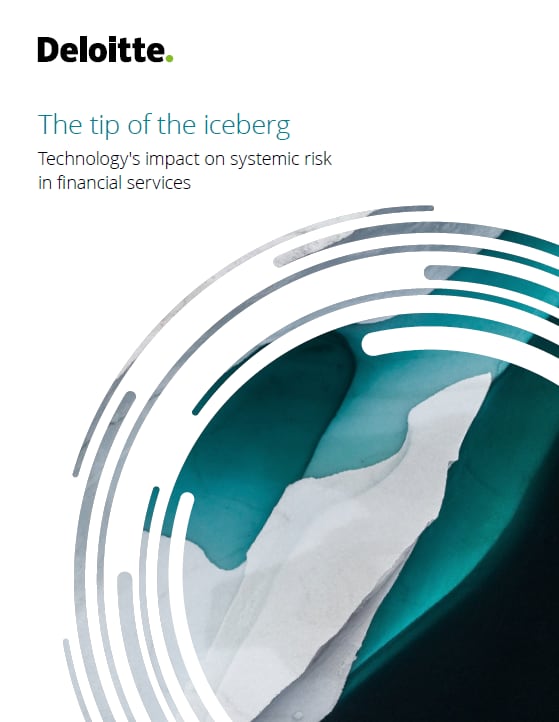Article
Beneath the Surface: Technology-driven systemic risks and the continued need for innovation
A report by the World Economic Forum and Deloitte
The accelerated adoption of technology in financial services is giving rise to new sources of risk, which can accumulate across the ecosystem to form systemic risks. These risks are often difficult to interpret and anticipate, and hence, not easily mitigated. Mitigation approaches are dependent upon both learnings derived from past incidents and the possible outcomes of the future.
Deloitte and the World Economic Forum conducted a survey, series of interviews, and global workshops virtually over the past twelve months with over 200 senior leaders and experts at financial institutions, disruptive financial and non-financial technology players, regulatory and policy-making bodies, and academic institutions to understand systemic risks in the financial services industry.
This report defines systemic risks, identifies the most significant short- and long-term risks stemming from the increased use of technology in financial services, highlights the most significant implications, and examines the potential of new technology and innovation in the risk mitigation process.
This report classifies the individual sources of risk into six themes that highlight the role of technology in creating and amplifying systemic risks. They are:
- Digital interdependencies: New interconnections and collective dependencies on certain critical service providers significantly contribute to the number of vulnerable nodes that could threaten and exploit the financial system’s essential functions.
- Shared model vulnerabilities: The lack of common taxonomy across external policies and absence of forward-looking information being embedded into modelling applications present extensive uncertainties for financial services players.
- Gaps in entity-based regulation: Certain emerging financial activities remain unaccounted for by the current regulatory regime due to unapplicable customary approaches, presenting risks to financial stability, consumer protection and market integrity.
- Conflicting national priorities: Incompatible nation-state approaches, coupled with the lack of sound global conduct and coordinated effort, are allowing cyber-attacks, financial crime, and cross-border data issues to create harm to the global financial system.
- Emerging sources of influence: Emerging sources of influence are creating new opportunities for market manipulation and a paradigm shift to participation in financial markets that extend beyond the scope of current protection mechanisms.
- New drivers of financial exclusion: While technology has been instrumental in promoting financial inclusion, several unintended consequences are emerging, such as inaccessibility and algorithmic biases, and hindering global financial prosperity.
This study is the first of Deloitte and the Forum’s two-part Technology, Innovation and Systemic Risk initiative. From its key insights, this document will allow leaders to dive beneath the surface for a complete view of technology-driven systemic risks and will guide mitigation decision-making.
Watch our Beneath the Surface webcast, where we were joined by an accomplished lineup of global leaders from the Technology, Innovation, and Systemic Risk (TISR) initiative who shared their perspectives around: the most significant systemic risks stemming from the increased utilization of technologies in financial services.



